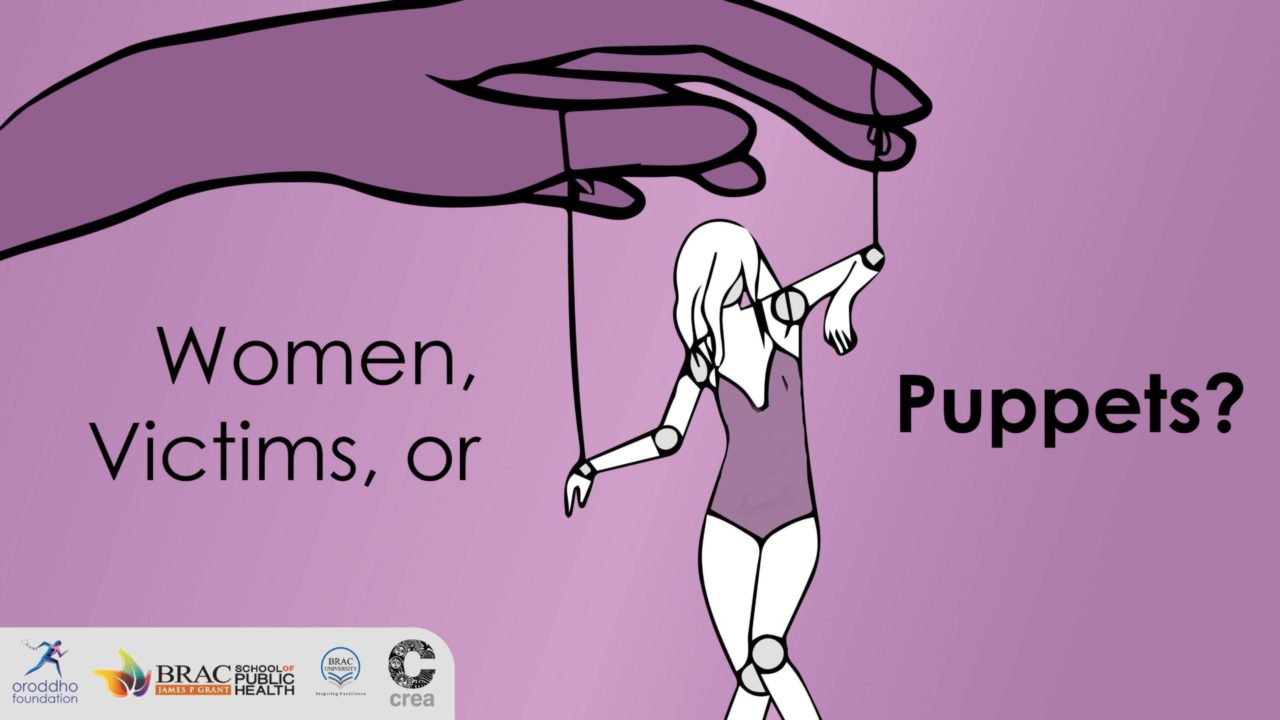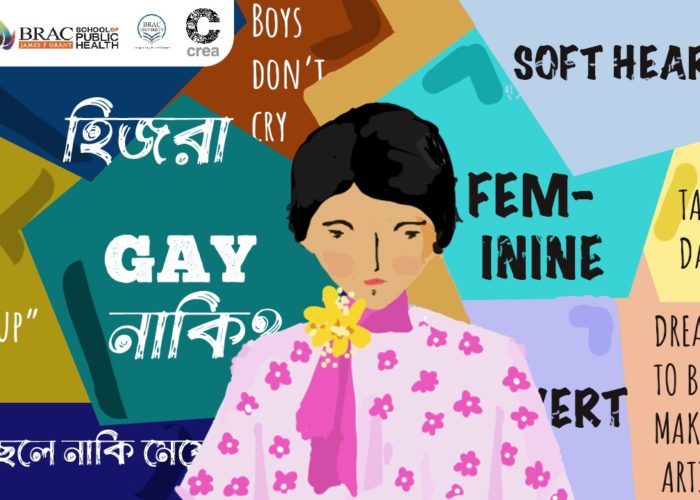We live in a society where a woman’s attire receives more scrutiny than the men who actively take part in making these women feel uncomfortable to even walk down the street. Contrary to what our society may believe, deeming a woman’s honour to be her “virginity” is what leads to heinous acts of sexual assault to be taken so lightly. Rape is a form of sexual assault which is the act of engaging in sexual activities with someone without their consent. According to WHO, 1 in 3 women have experienced some form of sexual abuse in their lifetime. The social stigma around rape has caused fewer and fewer victims willing to come forward and even when victims of rape do come forward only 3% of the rapists actually get convicted in Bangladesh.
How exactly has this come to be?
The root of this issue derives from rape culture. This term was founded back in the 1970’s by second-wave feminists in USA. It talks about how normalization of misogyny, patriarchal beliefs along with objectification of the female body perpetuates and encourages rapist-like behavior. This means that men are put up on a pedestal where they are made to believe they hold power over women which they can then abuse.
What is the history behind Rape culture?
Rape has been used as a weapon of war and oppression throughout history. It has been used to degrade and shame women for having their “honour” stolen from them. During the Bangladeshi Liberation War, women had to endure genocidal rape by the members of the Pakistani military and Razakars. It was done to terrorise and humiliate their communities during war time. The following consequences of it were also horrific, oftentimes leading to countless suicides, pregnancies and death. A more recent example of this is the relentless sexual violence and torture of Rohingya women by the Burmese military. The Rakhine state has seen far too many cases of mass rape and bloodshed of Muslim Rohingya women which eventually led them to flee their own country.
How is rape culture prevalent today?
In the more recent times, women fall victim to sexual advances in the form of remarks, non consensual touching and even rape. According to Bangladesh police statistics, there are close to 13 rapes happening every single day and the numbers keep rising. Over 90% of sexual assaults are committed by someone that the victim already knows and trusts, according to a study done by Glasgow university. For example, a 7 year old girl in Dhaka was sexually violated by her cousin in her own home.This can further prove how a victim’s age, clothing or location does not matter if the intent of the perpetrator is wrong in the first place.
The media that we consume on a regular basis also plays a part on how we tend to interpret things. Sexist undertones in certain songs and movies also add to these existing issues. Popular Bollywood songs such as, “Tu cheez bari hai mast mast” or “Balam pichkari” quite literally glorify objectification. For example the very repetitives lines from the song “Tu cheez bari hai mast mast” says that the girl has a very alluring body and the word “cheez” in itself is used to describe an object. Hence, promoting and condoning these types of media may seem insignificant but when seen from a wider perspective, it further trivializes issues surrounding rape culture.
What does victim blaming mean?
The so-called norm of “Boys will be boys” combined with the sexist attitudes that are embedded into the minds of people is what creates a social environment where girls and their rights are marginalized. This leads to victim blaming and shaming young girls for coming forward with their sexual assault stories.
Victim blaming occurs when the victim of a crime is partially or fully blamed for what has happened to them. Every time a girl comes forward they either receive little to no help or they are asked derogatory questions such as, “Well what were you wearing?” or “Why did you walk through a dangerous neighborhood?” which perpetuates the idea that it is her fault that she was assaulted rather than holding the actual perpetrator accountable. When for example a person is mugged, nobody stops to think, “Why was this individual mugged?” then why does a victim of sexual assault not receive similar treatment?
What is the rape culture pyramid?
The Rape Culture Pyramid depicts how the normalization of cat-calling, insensitive jokes about rape, sexism etc., can eventually cause crimes such as child molestation, domestic violence and even murder. It is a representation of the stages of rape culture and to what extent it may get to. Abuse against women stems from the belief that men are unable to control themselves and their urges hence they should get away with unacceptable behavior.
Seemingly harmless acts such as cat-calling may go unnoticed in society but these kinds of behavior often results in devastating and much grimmer crimes. One example of such an incident took place in 2016, when a teenage girl returning home from school was continually being catcalled and stalked by a man. After his advances had been ignored for several days, the stalker stabbed the young girl to death near her school area.
An ongoing issue, mostly in South Asian countries is the widespread use of acid on women’s faces if for example their marriage proposal had been rejected. Acid attacks are a common way for men to retort back. One such incident occurred where a young girl from Faridpur was being frequently harassed for two years by a man and eventually became the victim of an acid attack. Another more recent example of this took place in Rajshahi, where a 15 year old girl had acid thrown on her face by her husband.
An example of another recent occurrence, where a group of men attacked a married couple at night. Then they proceeded to gang rape the wife after tying up her husband. These are only a few of the many examples of assault that women have gone through over the years.
How can we overcome this?
- Promote healthy masculinity : There is a massive misconception about what masculinity actually means. Dominance and violence are seen as indicators for how “strong” or “masculine” men are. Rather self reflection and expression can help individuals better understand themselves.This can be possible if open and honest conversations about empathy, kindness and respect is encouraged amongst peers. Healthy masculinity can end abuse on women.
- Education and awareness : It is vital for every nation to have comprehensive sex education (CSE). This can help young individuals be well-informed about their sexual health and develop respectful sexual relationships as they grow up. If done right, CSE can teach children about the social and physical aspects of sexuality and how their choices affect their own well-being and that of others. They can then be aware of consent, contraception, unintended pregnancies, sexually transmitted infections (STIs) etc. It has also been found that children receiving CSE are more prone to abstain from sexual activities for longer and it even improves their attitudes surrounding it. It creates an environment where reproduction, gender equality, human rights etc., is talked about in an age appropriate manner.
- Making the victims feel heard : If someone reveals they had been sexually assaulted, actually listen to their story rather than questioning their motives. It is better to believe a rape accusation than to support a rapist. In the era of movements such as #MeToo it has become more widely accepted to do so, even in Bangladesh.
Therefore, in order for us to move forward, it is crucial for people to keep an open mind and understand the magnitude of the issues surrounding rape culture. Anyone that is found acting in a problematic manner within the rape culture pyramid, must be held accountable for their actions. People need to be called out whenever they are adding to any segment of the pyramid. This can help break the pattern of normalizing such behaviour. Then only can we make a dent on this widespread issue.


